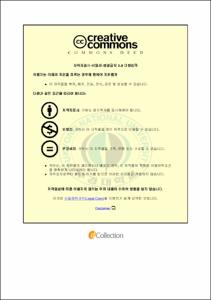종조사「ね」와「よ」의 지도방안 연구
- Alternative Title
- The Teaching Strategy Study of「Ne」and「Yo」
- Abstract
- Abstract
In this paper, the writer would like to arrange the meaning and usage of the post positional words 「ne」 and 「yo」 on the basis of the precedent researches and existing
teaching materials and then to suggest the teaching method of the 「ne」 and 「yo」 in teaching Japanese language. This paper is divided into three parts: the introduction, the main discourse and the conclusion.
In the introduction, the aim of this study, the object of research and the method of investigation are stated and arranged for the meaning and usage of the post positional words 「ne」 and 「yo」 which are studied in the precedent researchers.
In the main discourse, the appearing and usage frequency of 「ne」 and 「yo」 and its meaning and usage are compared and analysed according to the analysis of 12 text books of No.7th curriculum. And in addition to it, in order to investigate the actual conditions of usages for the post positional words in the text (1) edited by Sungandang which is used in the second grade of Buniel High School, the students of Japanese Language(1) class of the school answered in the enquete at two times and its result appeared in the main discourse. And the detailed teaching method of the post positional words 「ne」 and 「yo」 is suggested on the basis of investigated results.
Last, in the conclusion, the result and afterward tasks are consisted of a form of statement.
The arrangements of investigation are followings. First, the result of analysis of 12 text books is that in the function of the post positional words 「ne」 and 「yo」 which are described in the high school Japanese texts, the 「ne」 is used in a expression of the slight emotion or in a meaning of agreement or confirmation of hearers and the 「yo」 is stated that it is used in a case of speaking a unknown fact of partner or a speaker's judgment or strong opinion to the hearers. But in the real analyzed example sentences of Japanese (1) text of the high school, the 「ne」 appears in the case of speaker's usage of cognition which states his thought and judgment except for the slight emotion, agreement and confirmation. In the result of enquete investigation, the answerer's degree of understanding is appeared relatively in a low level in spite of the much related item in the text. Like this, it is thought that it is very difficult to make the student understand the correct usage of the post positional words.「ne」 and 「yo」 only by the explanation of text book. Therefore, the writer suggested in this paper that the teaching guidance is necessary because of a judgment to make students understand the precise use about the post positional words 「ne」 and 「yo」 which are frequently appeared in the every day conversation. The points of teaching are following.
(1) Teaching the main usage of 12 texts in which the precedent researchers arranged.
(2) Teaching the main usage that the answerers of enquete think difficult on the basis of a result of investigation.
(3) To make the students understand the main pattern in which the situation and condition of conversation appeared and the characters of pattern and meaning are expressed in the text.
(4) Teaching the correct difference of 「ne」 and 「yo」 in the case of using in the same structure.
(5) Teaching the large boundary of classification in the same category of the post positional words 「ne」 and 「yo」 in the basic point because the each description about the 「ne」 and 「yo」 usages is meaningless.
(6) Teaching the difference between the declarative sentence without the post positional words 「ne」 and 「yo」 and the post positional sentence is worried to the students. Thus, in the necessary, we should teach the difference but it is need to think about the difference between the post positional words 「ne」 and 「yo」.
(7) Lastly, it is necessary to advise the beginners that the post positional words 「ne」 and 「yo」 are used in the case of the allowed condition with the same intimate emotion. Likewise, when we teach the post positional words 「ne」 and 「yo」 in the Japanese language teaching class, it is good to think that the students are able to understand the main function of the post positional words 「ne」 and 「yo」 on the basic point being classified explanation with a teaching plan explained above.
- Issued Date
- 2011
- Awarded Date
- 2011. 2
- Type
- Dissertation
- Keyword
- 종조사 지도방안
- Publisher
- 부경대학교
- Affiliation
- 부경대학교 교육대학원
- Department
- 교육대학원 일어교육전공
- Advisor
- 손동주
- Table Of Contents
- Ⅰ. 서론................................................................1
1. 들어가기............................................................1
1.1. 연구목적.........................................................1
1.2. 고찰의 대상.....................................................3
1.3. 연구방법.........................................................4
2. 선행연구............................................................5
2.1.「ね」「よ」의 사전상의 개념.............................5
2.2.「ね」「よ」의 용법 분류...................................6
2.3.「ね」「よ」의 용법 종합..................................11
Ⅱ. 본론...............................................................12
1. 교과서 분석.......................................................12
1.1.「ね」「よ」의 출현빈도...................................13
1.2.「ね」「よ」의 용법별 출현빈도.........................14
1.2.1.「ね」의 용법별 출현 빈도 ............................15
1.2.2.「よ」의 용법별 출현 빈도.............................17
1.3.「ね」「よ」의 용법 분석..................................19
2. 앙케이트 조사 및 결과분석...................................32
2.1. 피조사자 분석.................................................32
2.2. 피조사자의 학습실태 조사.................................33
2.3. 앙케이트 설문지..............................................37
2.4. 앙케이트 결과 분석..........................................42
2.4.1. 1차 조사 분석결과........................................42
(1) 12종 교과서의「ね」문항 결과표........................42
(2) 12종 교과서의「よ」문항 결과표........................43
2.4.2. 2차 조사 분석결과........................................44
(1)『성안』의「ね」문항 결과표.............................44
(2)『성안』의「よ」문항 결과표.............................46
2.5. 문항에 대한 정답률 그래프.................................47
3.「ね」「よ」의 지도방안......................................51
3.1.「ね」의 지도방안............................................53
3.2.「よ」의 지도방안............................................57
Ⅲ. 결론 및 향후과제..............................................62
..........................................................64
................................................................65
- Degree
- Master
- Files in This Item:
-
-
Download
 종조사「ね」와「よ」의 지도방안 연구.pdf
기타 데이터 / 1.22 MB / Adobe PDF
종조사「ね」와「よ」의 지도방안 연구.pdf
기타 데이터 / 1.22 MB / Adobe PDF
-
Items in Repository are protected by copyright, with all rights reserved, unless otherwise indicated.